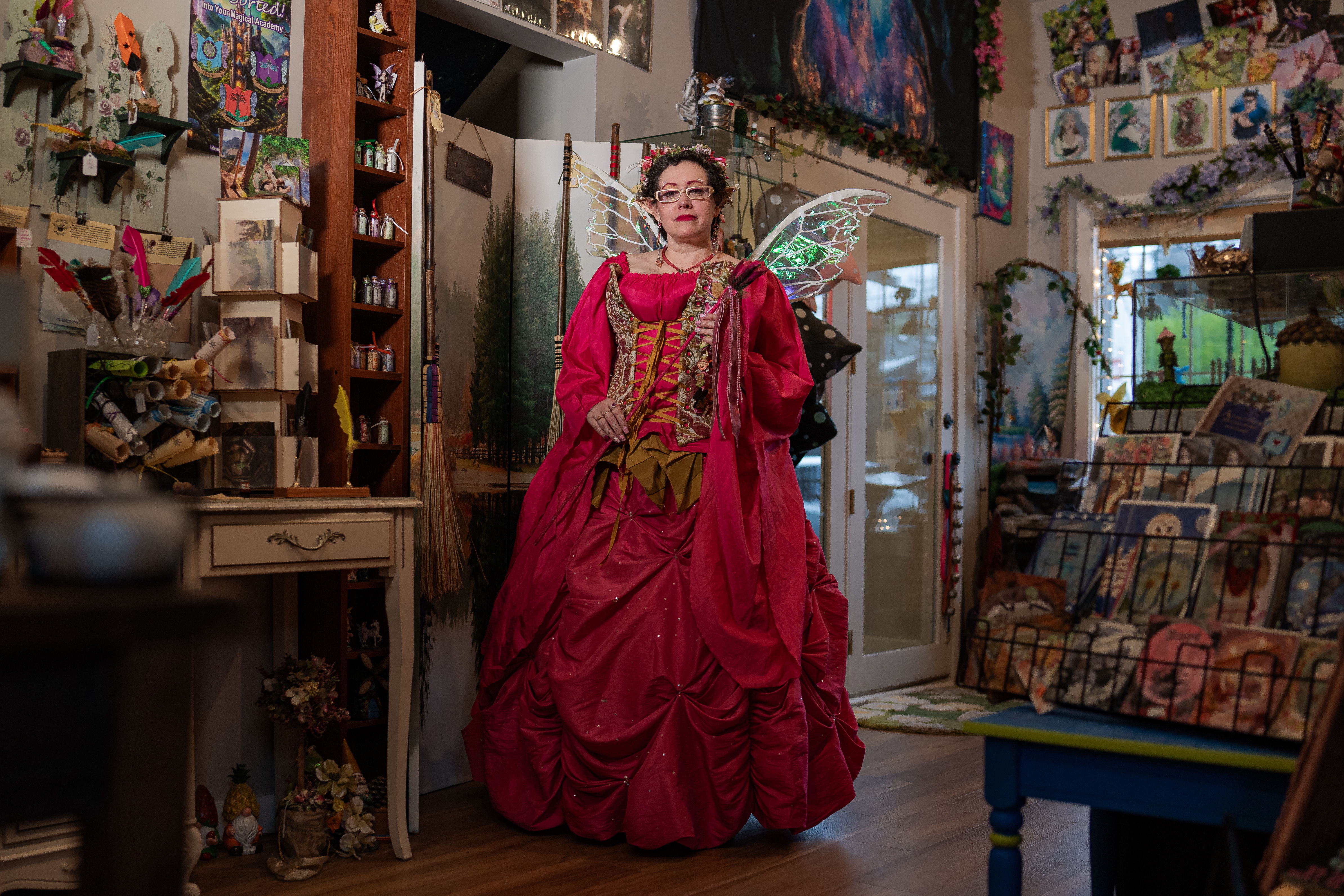Spring Arts Preview
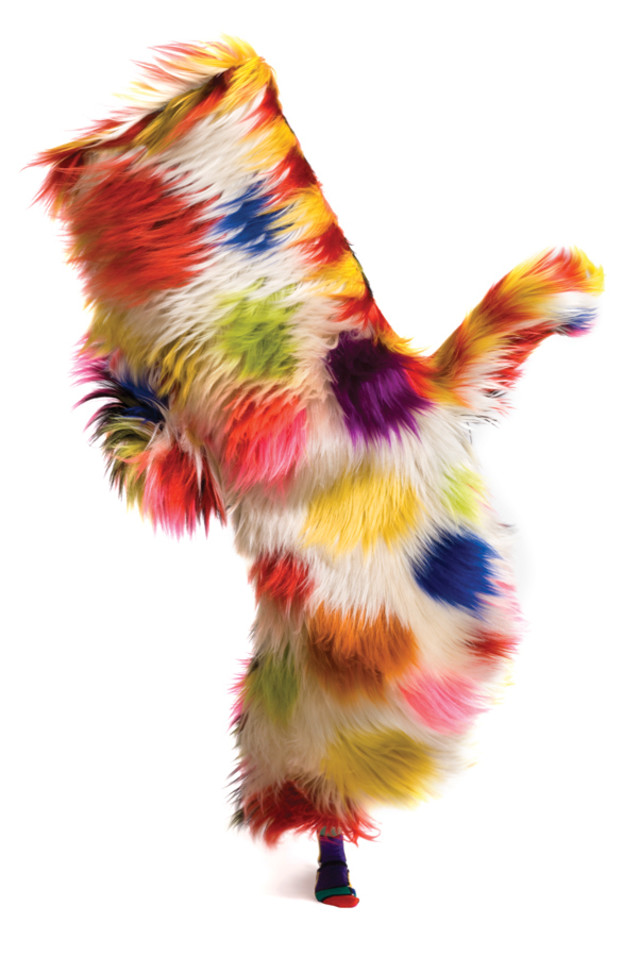
Image: James Prinz
THERE’S A MONSTER loose in Seattle. He’s a tower of multicolored hair, silky locks from head to toe. No eyes, no ears. Just a Day-Glo Sasquatch with a penchant for shimmying. Rumor has it he has friends, and they could show up outside your office at any moment. Will you be ready for the invasion? Will you be ready to dance? Because they’re coming…the artists are coming.
Beneath the fuzzy full-body armor are Spectrum and Cornish dancers, tapped to frolic around town this spring inside “soundsuits” created by Chicago artist Nick Cave. He builds beautiful, cacophonous costumes-as-sculptures made of found objects, everything from human hair to sequins to sandwich bags. A collection of suits goes on display at Seattle Art Museum in March, but SAM plans to take the suits for a walk, too. “It’s going to entice and build a level of curiosity, to get people to the museum,” Cave said of the planned “dance invasions.” “It’s about being able to have this up-close encounter with the sculptures.”
Desperate times call for creative measures. The lingering recession has stymied cultural organizations worldwide, and prompted local groups—including major players like SAM, Seattle Symphony, Seattle Opera, and Seattle Rep—to face facts with revamped seasons, fewer performances, staff cuts, and furloughs. Even more debilitating, perhaps, is that audiences don’t seem to care. According to a recent study by the National Endowment for the Arts, 65 percent of the population doesn’t even participate in benchmark activities: opera, jazz, theater, ballet, visiting museums.
Rather than dragging people kicking and screaming to The Magic Flute, arts groups have embraced tech-savvy strategies and adventurous programming to attract new audiences. Not all will succeed—only time will tell if Broadway’s Spider-Man musical will lure 12-year-old boys away from their Wiis and spark a lifelong love of the theater. But other experiments have proven successful: New York’s 127-year-old Metropolitan Opera broadcasts in HD, streaming live performances to movie theaters around the world. The Met even tweets.
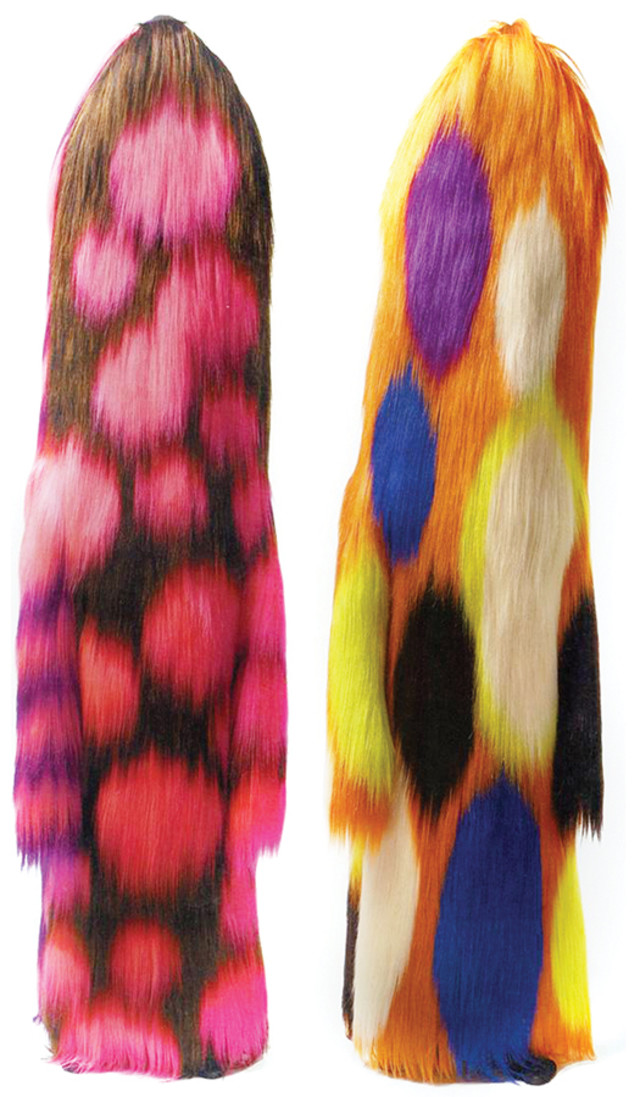
Nick Cave’s soundsuits hit the town.
Image: James Prinz
Not to be outdone by New York, Seattle was one of two cities the Wallace Foundation—DeWitt and Lila Acheson Wallace’s national arts and education charity—recognized in 2008 for excellence in the arts. (Minneapolis–St. Paul was the other lucky metropolis.) Now nine Seattle organizations—armed with $7.7 million in Wallace grants, a portion designated specifically for audience building—have mounted a full-scale attack on the city. What’s more, they’re joining forces: theaters collaborating with dance companies, museums with rock bands. They’re prepared to show you what you’re missing.
Cue the dancing soundsuits. SAM will also hold two of its quarterly and wildly popular late-night Remix parties during the exhibition Nick Cave: Meet Me at the Center of the Earth, and the first Thursday in May, the museum is planning a happening worthy of the ’60s. Come and make wearable art, and then join a parade through Pioneer Square. “[We’re hoping] the crowd just grows and grows and heads to SAM, where there’s a big dance party afterward,” said Sandra Jackson-Dumont, deputy director of education and public programs.
Faces are flushed with the prospect of a creative explosion. And though SAM had to borrow $7 million from the museum’s endowment to cover debt payments late last year, memberships are up—way up. Thanks to the recent Picasso exhibit, they’re clocking about 100 new members a day. But not everyone has Cubist masterpieces and soundsuits to show off.
{page break}
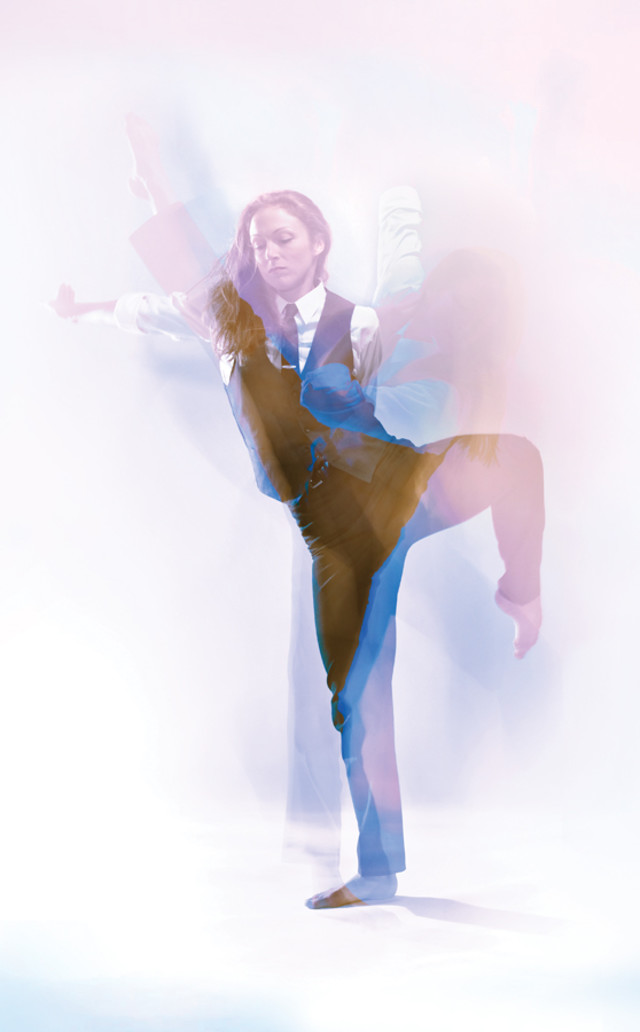
Catherine Cabeen creates “a painting in time and space” with her new dance Into the Void at On the Boards.
Image: Michael Clinard
If You Booze Them, Will they Come?
Katie Jackman is the first to admit that Seattle Repertory Theatre was enchanted by the power of prosecco to draw a younger crowd. “Our [initial Wallace grant] premise was all about parties…how social events help bring more people to the theater,” said Jackman, director of external relations. The Rep wasn’t the only arts group thinking along party lines: Seattle Symphony boasts three nights of Beethoven and Wine, and no self-respecting art gallery hosts a dry opening. But a 2009 survey of the Rep’s patrons told a very different story. “They don’t care about parties that much. It’s about personal recommendations, not wine and cheese.”
Not earth-shattering stuff, but the company’s new approach has been innovative. In addition to Play Passes—$50 gift cards—that went out to select subscribers this season, the Rep just rolled out two new web initiatives that we haven’t seen elsewhere. Event Builder, an Evite of sorts, allows theatergoers to reserve tickets and invite friends to pick a seat nearby. And Ticket Discount Generator enlists theatergoers to pass along custom deals to their Facebook friends. It’s all Zuckerbergian word of mouth, timed to coincide with a lineup for the 18 to 35 crowd: The K of D: An Urban Legend (through February 20) about a girl with a lethal kiss, and Mike Daisey’s fiery monologue about his love-hate relationship with Apple, The Agony and the Ecstasy of Steve Jobs (April 22–May 22). In a place like Seattle, which Daisey calls “the center of techno-libertarianism,” it’s fair to say that fine tech sells fine art.
An App-titude for Innovation
"We’re the first film festival to have an iPhone app,” said Carl Spence, artistic director of the Seattle International Film Festival. Whether or not SIFF really was the first to app-up, the country’s largest film festival saw a 20 percent increase in attendance last year, thanks largely to its Wallace-funded web initiatives. People still talk about the SIFFter—a clickable photo collage of the fest’s 400-plus films, accessible by smartphone, that aids your search for the perfect comedy, drama, or animated short. “The biggest [complaint] about the festival is that it’s unwieldy,” said Spence. “It can be daunting to the average person, so we’re trying to provide entry points to make it easier for people to attend.”
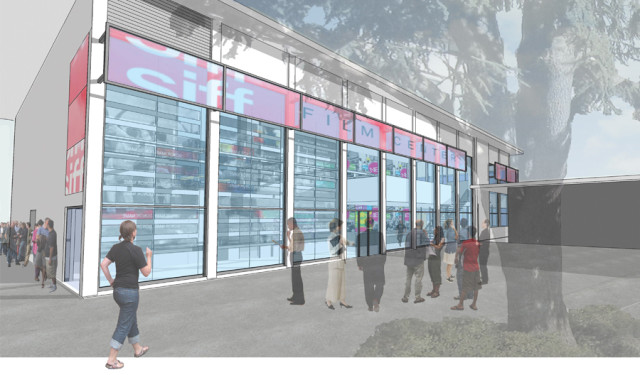
Come fall, SIFF’s new digs at Seattle Center will offer more screening rooms.
Image: Owen Richards Architects
Speaking of daunting: Upstairs from SIFF’s screening room in McCaw Hall, Pacific Northwest Ballet is battling age-old perceptions of ballet as an elite art, and looking for ways to encourage teens, college students, postgrads, and young professionals to walk through the door. “One of the kids in our focus groups said, ‘I think you have to wear a fur coat.’ Well, first of all, who wears a fur coat in Seattle?” said Ellen Walker, director of marketing and communications. “With [artistic director] Peter Boal’s arrival and more contemporary programming, we wanted to update our branding messages.” To that end, Wallace funded PNB’s new multimedia-friendly website, now home to YouTube clips of Twyla Tharp choreographing new work last year and program notes about Marco Goecke’s upcoming world premiere in the Contemporary 4 (March 18–27) showcase.
On the Boards’ Wallace experiment, ontheboards.tv, takes web marketing even further, and gives new viewers a chance to sample contemporary performances that defy easy description. In the past year, ontheboards.tv has streamed and sold high-quality, high-definition videos of entire shows staged at 100 West Roy Street. It’s Young Jean Lee’s irreverent race case The Shipment on your laptop or a second chance to see the final dance theater project of late Australian choreographer Tanja Liedtke. In just one year, OTB TV reached users in 84 countries. “We just try to cultivate an intelligent audience,” said artistic director Lane Czaplinski. “We’re hoping we can sustain ontheboards.tv, not to create a Netflix of contemporary performances as much as a case study for how nonprofits can use different techniques to distribute content.”
{page break}
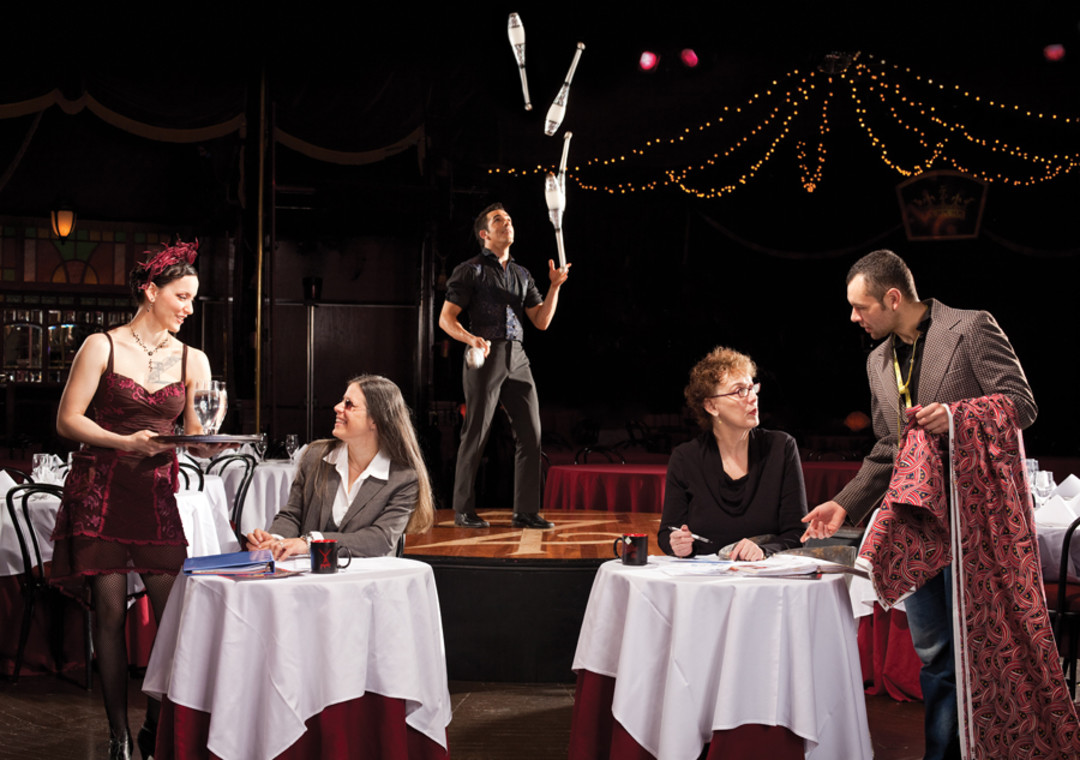
Teatro ZinZanni draws a night-owl crowd to its spiegeltent for the new cabaret show, Mezzo Lunatico.
Image: Michael Clinard
With a multidisciplinary piece coming up like Catherine Cabeen and Company’s Into the Void (April 28–30)—inspired by the artwork of postmodern painter Yves Klein—OTB TV can give viewers the opportunity to study moments like paintings. Cabeen herself speaks like a film director, describing the opening frame of Into the Void:
“It opens with a completely empty space…we are creating emptiness. There will be a white floor that runs under the first row of the audience to the back wall, and then straight up. Sort of like a photographer’s seamless paper. To either side, the space will be draped in black, so the central void will also hopefully be a gateway or door… Three people will use their painted bodies to dance…
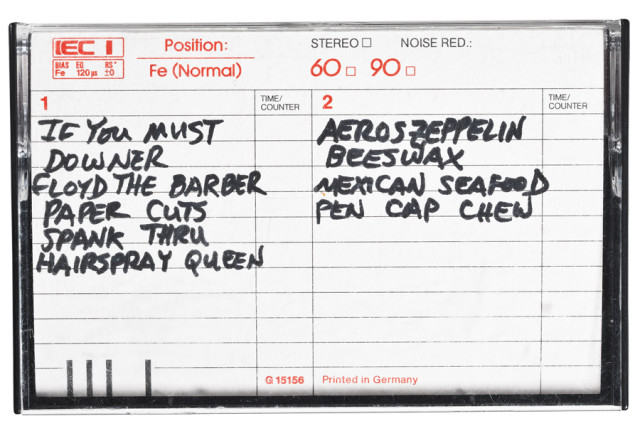
Kurt’s demo tape and guitar: Nirvana lives on at EMP | SFM.
Image: EMP | SFM
“As a dancer, all the art I create is only an experience,” Cabeen said. “It only exists in the time it’s performed in this very abstract place between the performers and the audience.” Until now.
Give 'Em the Good Stuff
Though On the Boards has succeeded in its mission to introduce our city to new work and international innovators, simply being edgy isn’t a recipe for runaway profits. The key is to connect with your community, and, of course, offer superior programming.
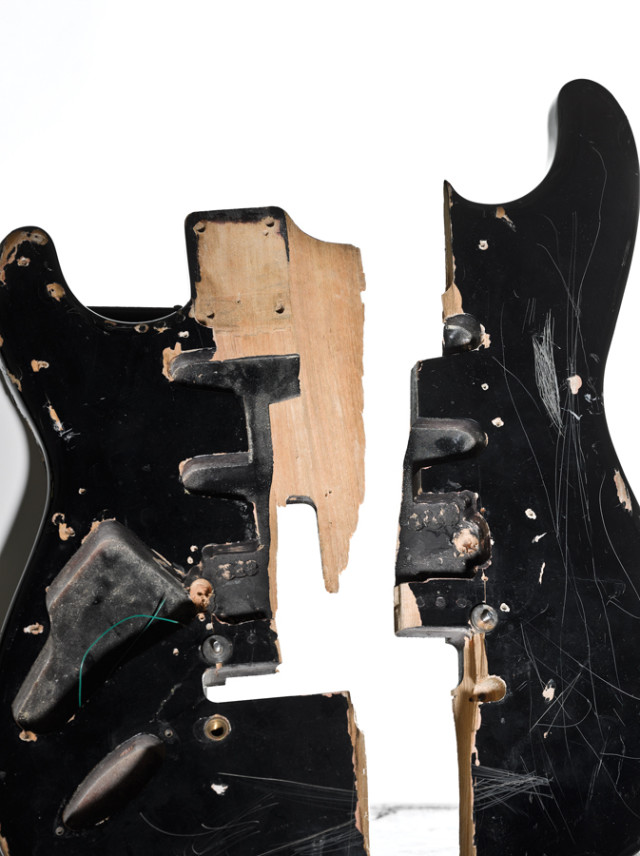
And if the audience wants pop, give ’em pop. Paul Allen’s Experience Music Project | Science Fiction Museum (another Wallace recipient) has found a niche in memorabilia exhibits: the many guitars of Jimi Hendrix, the spaceships from TV series Battlestar Galactica, and, in June, the world of Avatar ’s Pandora. Fanboys from all over the country will also road-trip to see Nirvana: Taking Punk to the Masses (April 16, 2011–April 22, 2013), the largest-ever collection of the grunge band’s guitars, photos, notepad scribbles, and other rock star ephemera. What Paul Allen gets is that Seattleites love to geek out, and we’re proud to claim our musical heritage.
“For Seattle, if grunge never happened, we’d never have the music scene we have now,” said exhibit curator Jacob McMurray. “We’d never have a Vera Project or the Mayor’s Office of Film and Music… That’s one of the most indelible legacies of Nirvana.”
And just as Kurt and the gang brought grunge to the masses, Seattle is showing it has a knack for shuffling the arts into the twenty-first century—and into your path. The spring season is full of exciting new programming, innovations, and temptations. Are you ready?

